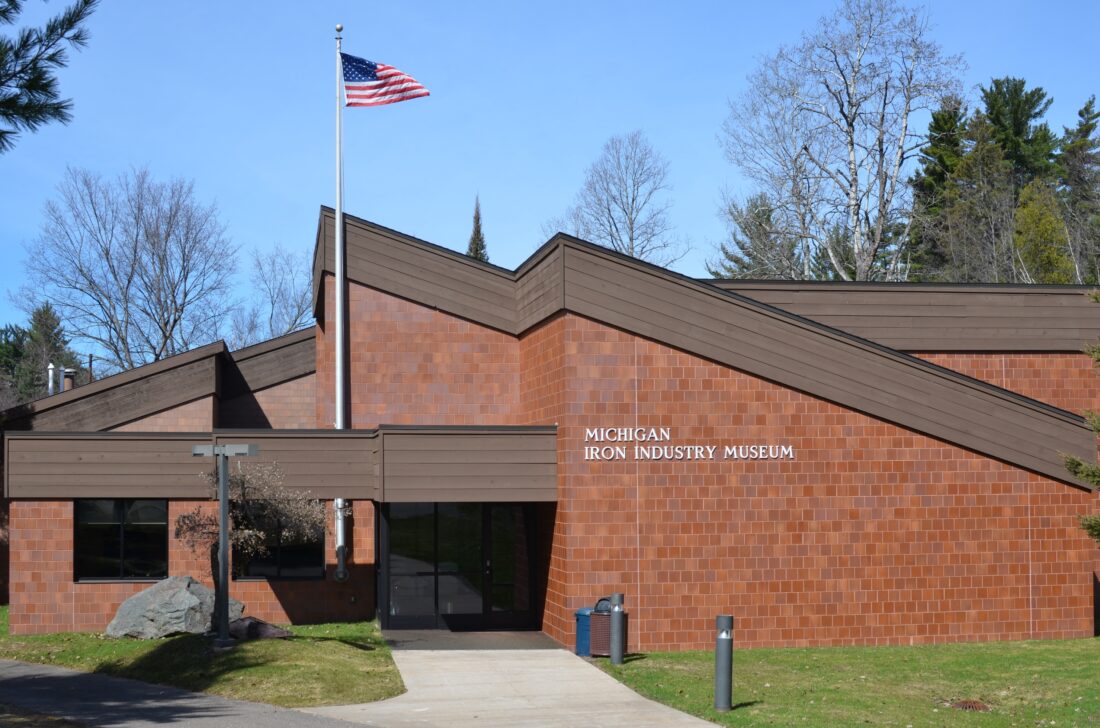Michigan Iron Industry Museum under DNR co-management

The Michigan Iron Industry Museum is seen. (Photo courtesy of the Michigan Department of Natural Resources)
NEGAUNEE — In a move that will provide important funding opportunities for facility improvements and grounds maintenance, the Michigan Iron Industry Museum in Negaunee has become a sub-unit of Van Riper State Park, the Michigan Department of Natural Resources announced.
The decision to link the DNR’s Michigan History Center museum with the Parks and Recreation Division was made by DNR Director Dan Eichinger under a land use order signed at Tuesday’s Michigan Natural Resources Commission meeting in Lansing.
This change will provide additional funding to the DNR Parks and Recreation Division for building repairs and regular maintenance, such as snow removal. The Michigan History Center will continue to manage the museum’s exhibits, historical interpretation and programming.
Few changes will be evident to the public with this internal DNR organizational transition. However, a Recreation Passport will now be required to visit the museum.
For an annual cost of $12 (or $6 for motorcycles), the Recreation Passport gives Michigan-registered vehicles year-round access to all 103 state parks, historic sites within state parks, 1,300 state-managed boating access sites, state forest campgrounds and parking at trailheads.
All revenue generated by Recreation Passport sales goes into a restricted fund that supports state park infrastructure and operations, a local grant program, state forest campgrounds, nonmotorized trails. and cultural and historic resource restoration.
This organizational model is consistent with the management of other Michigan History Center historic sites located within Fayette, Fort Wilkins, Hartwick Pines, North Higgins Lake, Sanilac, Tawas Point and Cambridge Junction state parks.
The Michigan Iron Industry Museum is the ninth museum co-managed by the DNR’s Michigan History Center and Parks and Recreation Division.
The museum, located 8 miles west of Marquette off U.S. 41 in Negaunee Township, overlooks the Carp River and the site of the first iron forge in the Lake Superior region.
Museum history
The Jackson Iron Co. and others manufactured wrought iron from local ore at the site from 1848-1855. In that pioneer enterprise was the seed of the Michigan iron industry that flourished for 125 years and still produces about 20% of the iron ore mined in the United States.
The museum tells the story of Michigan’s three iron ranges and the people who worked them through dramatic exhibits, audiovisual programs, and outdoor interpretive trails. A high-definition video, “Iron Spirits: Life on the Michigan Iron Range,” is shown six times daily in the museum’s 88-seat auditorium.
The museum also offers an active education program including seasonal events, a lecture series, and the Future Historians, a youth association that meets monthly during the school year. Every summer, the Future Historians share their knowledge and test their skills by providing costumed first-person interpretation for visitors at Fort Wilkins Historic State Park through four three-day living history camps.
In the mid-1970s, the Michigan Department of State joined efforts with local citizens to acquire, preserve and interpret the site of the Carp River Forge. In 1979-80, Marquette County and The Cleveland-Cliffs Iron Co. deeded a 40-acre tract of land, including the forge site, to the State of Michigan for development as a museum.
The museum was funded by the state at a cost of $1.5 million, built in 1985-86, and opened to the public in 1987.
In 2000, the state of Michigan appropriated $500,000 “to expand the exhibit space at the museum for artifact protection, additional exhibit displays and public programming, especially for school-age children.”
By a combination of public and private sector funding totaling more than $1.9 million, a 4,000-square-foot addition providing space for a new exhibit gallery, a museum store and enhanced visitor services opened in 2006.
A new entrance road improving public visibility and access from U.S. 41 was built in 2009 crossing an additional 40 acres of land donated by the organization now known as the Friends of the Iron Industry Museum.
A four-season interpretive trail system featuring elevated walkways, scenic overlooks and wayside exhibits was completed in 2011.




